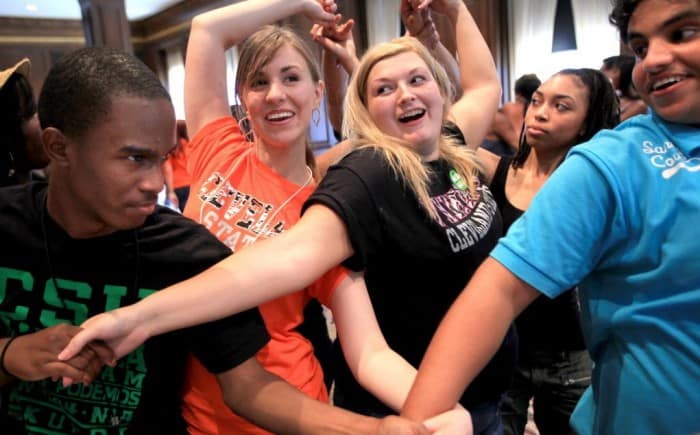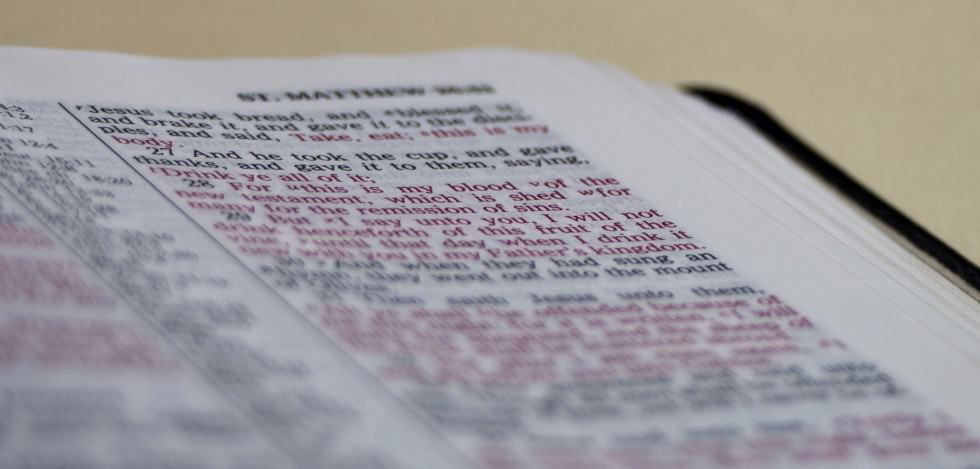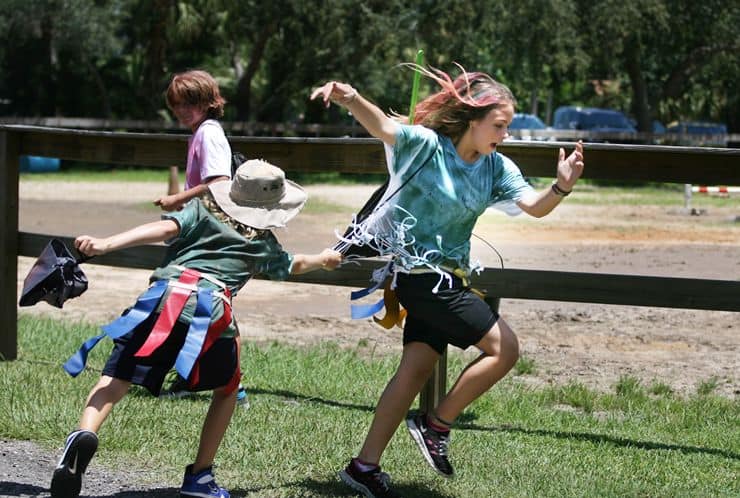Our selection of Sunday school games for kids, tweens, and teens provide fun with Bible learning. Children look forward to game time in Sunday school whether the games are short and simple, or more complicated. A good Bible game reinforces learning and makes a lesson memorable. The Sunday school lessons we have chosen work great in children’s church or any other children’s ministry setting.
More awesome games can be found in article Christian Icebreakers
General Guidelines for Playing Sunday School Games
The reason for playing Sunday school games is to help children learn about God and the Christian way of life. To meet this goal successfully, consider the following:
- Be sensitive:
- To newcomers who do not know the materials.
- To shy children who may know the material but are too shy to try.
- Rewards, such as candy, are not necessary. Play for points or just for fun.
- Do not allow children to criticize or make fun of a child that does not know the answer,
- Make sure that each game builds the self-confidence and knowledge of each child in the class.
Sunday School Games for Kids
Memory Verse Games
It is important for children to memorize the Word of God.
2 Timothy 3:16 New International Version (NIV)
All Scripture is God-breathed and is useful for teaching, rebuking, correcting and training in righteousness
Repetition works well. Use games that give each child an opportunity to repeat the verse a number of times. Work on the memory verse until all children know it or until all children have taken one turn.
Disappearing Words
Write the memory verse on a chalk or white board. Have the children recite the verse. Then ask a child to erase a word and have the children repeat the verse. Continue until all the words have been erased and the children are saying the verse from memory.
Variation: If do not have a chalk or white board, write each word of the verse on a different piece of paper, post the words of the verse, and ask the children to remove one word paper at a time.
Verse Hunt
Write each word of the memory verse on a separate piece of paper and hide the words around the classroom. Have the children find the words and lay them out in the correct order. Recite the memory verse together. You can hide the words again and repeat the game as many times as you wish.
Bible Lesson Review Games
It is important to know God’s Word. The following games help Sunday school students learn more about the contents of the Bible.
Sword Drill
Ephesians 6:10-17 New International Version (NIV)
10 Finally, be strong in the Lord and in his mighty power. 11 Put on the full armor of God, so that you can take your stand against the devil’s schemes. 12 For our struggle is not against flesh and blood, but against the rulers, against the authorities, against the powers of this dark world and against the spiritual forces of evil in the heavenly realms. 13 Therefore put on the full armor of God, so that when the day of evil comes, you may be able to stand your ground, and after you have done everything, to stand. 14 Stand firm then, with the belt of truth buckled around your waist, with the breastplate of righteousness in place, 15 and with your feet fitted with the readiness that comes from the gospel of peace. 16 In addition to all this, take up the shield of faith, with which you can extinguish all the flaming arrows of the evil one. 17 Take the helmet of salvation and the sword of the Spirit, which is the word of God.
Goal of the Game: Find a Bible passage as quickly as possible.
Materials Required: A Bible for all the students and the teacher
Distribute Bibles to each person. Explain to the students that you will open the Bible and select a random passage. When you say the passage reference, the students are to try to find the passage as quickly as they can. The first person to find the passage reads it out loud and gets one point. The first person to get five points wins.
Variation: This game can be played with partners or teams. You may set the number of points required to win the game at whatever number goal you think is best.
Ring the Bell
Prepare your list of review Bible lesson questions and divide the class into two or three teams. Give each team a bell. Ask a question. The first team to ring the bell answers the question. Points are awarded for a correct answer and deducted for an incorrect answer. When a team gives an incorrect answer, the other team gets a chance to answer correctly before moving to another question.
Variations:
- You can give teams an opportunity to look up the answer in the Bible, but reduce the number of points awarded.
- If you do not wish to use a bell, you can have the team members clap their hands.
Bible Adventure
A Bible alphabet game, this game works well for younger children who have some Bible knowledge and know their alphabet. The teacher begins by saying, “I took a trip through the Bible and found Abraham.” Then the children take turns, repeating the phrase and adding the name of a person whose name begins with a B, C, etc. Play continues until the whole alphabet is completed.
Variations:
- You can use places in addition to or in place of people.
- For older children, have volunteers tell a fact about the person or place named and give points for each fact.
- If you wish, you can have a race to find the person or place named in the Bible.
Sunday School Games That Teach a Lesson for Tweens and Teens
Protection
This game teaches tweens and teens the importance of surrounding themselves with good influences for protection from temptation.
1 Corinthians 10:13 New International Version (NIV)
13 No temptation has overtaken you except what is common to mankind. And God is faithful; he will not let you be tempted beyond what you can bear. But when you are tempted, he will also provide a way out so that you can endure it.
2 Corinthians 6:14 New International Version (NIV)
Do not be yoked together with unbelievers. For what do righteousness and wickedness have in common? Or what fellowship can light have with darkness?
Preparation: Put the following situations on notecards.
- You are friends shopping.
Tempter: Tries to get the other person to shoplift.
“These tops are too expensive. I’m going to just stick one under my shirt. You make sure no one is watching.”
Tempted: Tries to talk the tempter out of stealing.
- You are at one of your homes and the parents are out.
Tempter: Tries to get the other person to watch unacceptable videos on the computer.
Tempted: Objects to doing so and tries to talk their friend into doing something else.
- You are sleeping over at a friend’s house.
Tempter: Tries to talk the other person into sneaking out of the house.
Tempted: Refuses to do so.
- You are going to a movie with a friend.
Tempter: Wants to meet some unacceptable friends and go somewhere other than the movie.
Tempted: Wants to see the movie instead of spending time with the unacceptable friends.
- Your friend is making unacceptable choices – associations, drug or alcohol use, etc.
Tempter: Wants you to join in the activities.
Tempted: Resists participating and tries to talk friend out of doing so.
Pair class members and have one person in each pair play “Tempted” and one “Tempter.” Give a notecard to each pair of players. Give the students two to three minutes to attempt to convince each other to either resist or give in.
Follow-up Questions:
- Have you been tempted this past week? How?
- Does having Christian friends’ support help you resist temptation?
- Read each verse and discuss.
Satisfaction
Luke 12:13-21 New International Version (NIV) Parable of the Rich Fool
13 Someone in the crowd said to him, “Teacher, tell my brother to divide the inheritance with me.” 14 Jesus replied, “Man, who appointed me a judge or an arbiter between you?” 15 Then he said to them, “Watch out! Be on your guard against all kinds of greed; a man’s life does not consist in the abundance of his possessions.” 16 And he told them this parable: “The ground of a certain rich man produced a good crop. 17 He thought to himself, ‘What shall I do? I have no place to store my crops.’ 18 “Then he said, ‘This is what I’ll do. I will tear down my barns and build bigger ones, and there I will store all my grain and my goods. 19 And I’ll say to myself, “You have plenty of good things laid up for many years. Take life easy; eat, drink and be merry.”‘ 20 “But God said to him, ‘You fool! This very night your life will be demanded from you. Then who will get what you have prepared for yourself?’ 21 “This is how it will be with anyone who stores up things for himself but is not rich toward God.”
Place a large bowl of small candies across the room from the seated students. Give each player a plastic cup and have them put their name on it. When you give a “Go!” command, students get up, place their bowl on their seat, race to get one piece of candy from the bowl, run back to their seat, and put the candy in their cup. Players continue to do so until a timer goes off or the teacher calls out, “Stop!” Do not tell students ahead of time that they must be touching their cup when the time ends or they lose all of their candy. Play two or three times. Once the students know they must be touching their cups to keep the candy, it is interesting to note who risks all of their candy for more and who simply sits and waits for the timer to go off.
Questions:
- Do you feel the game is fair?
- Is it hard to be happy for someone who gets to keep their candy?
- Discuss the parable.
Suggested closing:
Sometimes life does not seem fair because others have more than you. God wants you to be content with what you have and be more concerned with your relationship towards him than about how much you have. God has promised to be with us at all times. God wants us to be thankful for what we have and to trust Him, instead of trusting in what we have to make us happy.
Seeing God in Everything
Materials needed: Miscellaneous items such as a small basket, measuring cup, sink plug, magnifying glass, key chain, keys, etc. placed in a large basket or bag.
Choose enough items for the number of students in class and the amount of time you have to play the game. Have each student or a few volunteers pick an item without peeking into the bag. Give everyone a few minutes to think about, “How is God like the object?” or “How you can see a Biblical truth in the object?” then allow them to tell their idea to the rest of the group. Example: For the magnifying glass – “God sees everything we do.”
Variation: If students seem to have trouble thinking of a Biblical truth, have them work in pairs or teams.
What Would Jesus Do and Say?
Suggested Memory Verses:
Matthew 7:12 New International Version (NIV)
12 So in everything, do to others what you would have them do to you, for this sums up the Law and the Prophets.
Philippians 2:3-4 New International Version (NIV)
3 Do nothing out of selfish ambition or vain conceit. Rather, in humility value others above yourselves, 4 not looking to your own interests but each of you to the interests of the others.
You have probably heard the slogans WWJD? (What Would Jesus Do?) and WWJS (What Would Jesus Say?). You see them on t-shirts, bumper stickers, backpacks, and many other items. Unfortunately, sometimes the people wearing these slogans are not acting or speaking in a very Christ-like way.
Materials Required: Index cards and rubber bands (one for each person playing), string, and clothespins.
Label the index Cards with W, J, S, and D – enough to complete the phrases “What Would Jesus Do?” and “What Would Jesus Say?” a number of times. On the reverse side of each card write one or the following discussion questions:
- What does it mean to do to others as you would have them do to you?
- What is your natural response when you have been treated wrong by others? Explain how you can change your natural response into a more Christ-like response.
- How can you make your actions and words match your beliefs about God? Explain.
- Is it easy to follow Jesus when you are with friends that do not believe in God? Why or why not?
- When might your right actions (kindness, generosity, fairness) give you the opportunity to talk about Jesus?
- Is it more important for a young person or an adult to do what Jesus would do? Explain.
- Could someone’s wrong actions or unkind words ever turn someone off from believing in God? Explain.
- When is a time kids your age might NOT want to love and obey God? Explain.
- What can kids your age do to help others learn about Jesus?
Tape the index cards to the clothespins (the part that you pinch). Hang the string from one corner to one wall of your room, so that the clothespins can be attached and not hit the wall. Have the letters WWJD and WWJS facing the players with the questions not showing. Designate a “shooting line” about 2-4 feet away from the cards. Players take turns shooting rubber bands at cards and if they hit a card, the class discusses the question.
Variations:
- You can choose different questions.
- You can play as teams with the winning team being the one who hits all the cards and discuss them in a set amount of time or first.
Children face competitive pressures every day in school, sports, and other activities. Children should learn in Sunday school that God loves everyone. Use your time with them to build their love of God, their self-confidence, and their relationship with Jesus.
The post 10 GREAT Sunday School & Bible Games for Kids appeared first on Icebreaker Ideas.
























































































